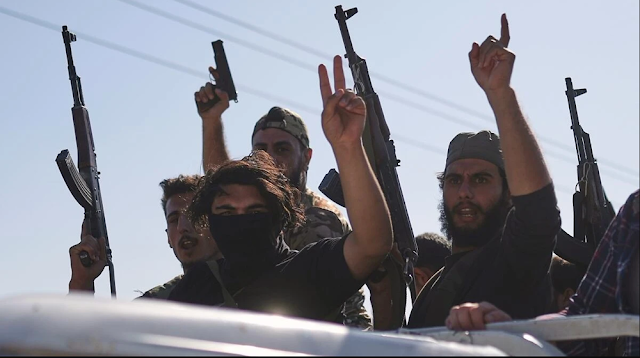The unrest comes amid heightened sectarian tensions under the ruling Hay’at Tahrir al-Sham (HTS) regime led by Abu Muhammad al-Jolani.
Various Arab tribes in northern Syria have put forth statements demanding a “general mobilization” against the so-called Syrian Democratic Forces (SDF), a US-backed group of Kurdish militants.
Sulaiman al-Mashi, a representative of the al-Boubna al-Shaabania tribe, warned that “the enemies have not yet sheathed their swords,” calling for continued resistance until further notice.
The al-Bu Jabr clan aligned with the initiative, urging members to “transcend tribal differences” and unite “to achieve freedom, justice, and the protection of rights.”
Several other tribes, including Albu Shaaban, Albu Dhaher, al-Walda and Bani Asid Hashemite, have joined the call, reflecting widespread discontent among Arab communities who view the SDF as an extension of foreign occupation.
The tensions come after the Pentagon recently announced that American forces had withdrawn from key bases such as Green Village and Conoco, handing over control to the SDF at a time when relations between Kurdish-led forces and local Arab tribes remained fraught.
The unrest also comes amid heightened sectarian tensions under the ruling Hay’at Tahrir al-Sham (HTS) regime led by Abu Muhammad al-Jolani.
The regime’s failure to broker a national reconciliation or bring stability to the fractured country since the fall of President Bashar al-Assad has contributed to the ongoing chaos.
In the northeast, the situation is further complicated by HTS’ harsh crackdown on minority groups, including recent violence against the Druze community in Sweida and Alawite civilians along the coast.
The Kurdish militants control a significant portion of northeastern Syria, particularly in areas along the borders with Turkey and Iraq.
This region, often referred to as the Autonomous Administration of North and East Syria (AANES), encompasses parts of Hasakah, Dayr al-Zawr, and Raqqa governorates, as well as a small area in the Aleppo countryside.
The SDF’s control extends to vital oil and gas fields in the region, which account for a large percentage of Syria’s hydrocarbon output.
For years, the SDF had been benefiting from revenues generated by oil fields in the region east of the Euphrates, under the US military occupation.
Efforts to integrate the SDF into the HTS military, following a March agreement in Damascus, have stalled.
Kurdish leaders insist on maintaining autonomous command, while the HTS regime demands full control—deepening mistrust on both sides.
Clashes erupted between the SDF and the HTS-linked militants in Aleppo at the beginning of this month.
On Tuesday, an HTS militant was killed in clashes with SDF forces in Aleppo province, Syria’s SANA news agency reported, casting further doubt over the integration deal.
The HTS defense ministry said the SDF must abide by that accord and stop targeting its forces, warning that “the continuation of these actions will lead to new consequences”.
However, the March agreement does not specify how the SDF would be merged into Syria’s armed forces. The group has previously said its forces must join as a bloc while the HTS wants its fighters to join as individuals.






